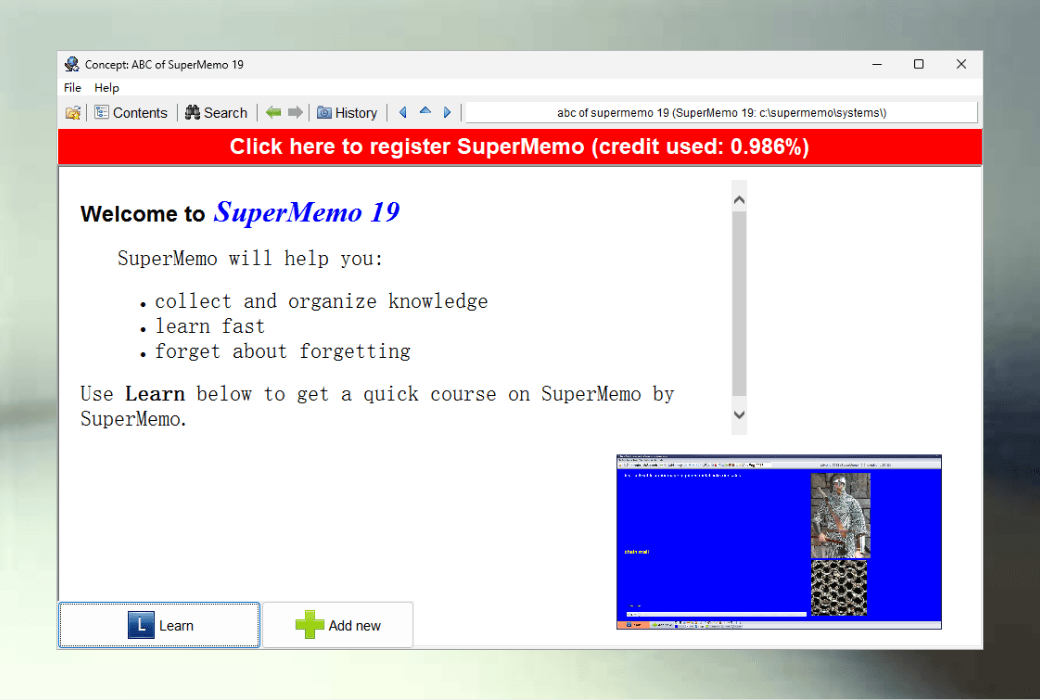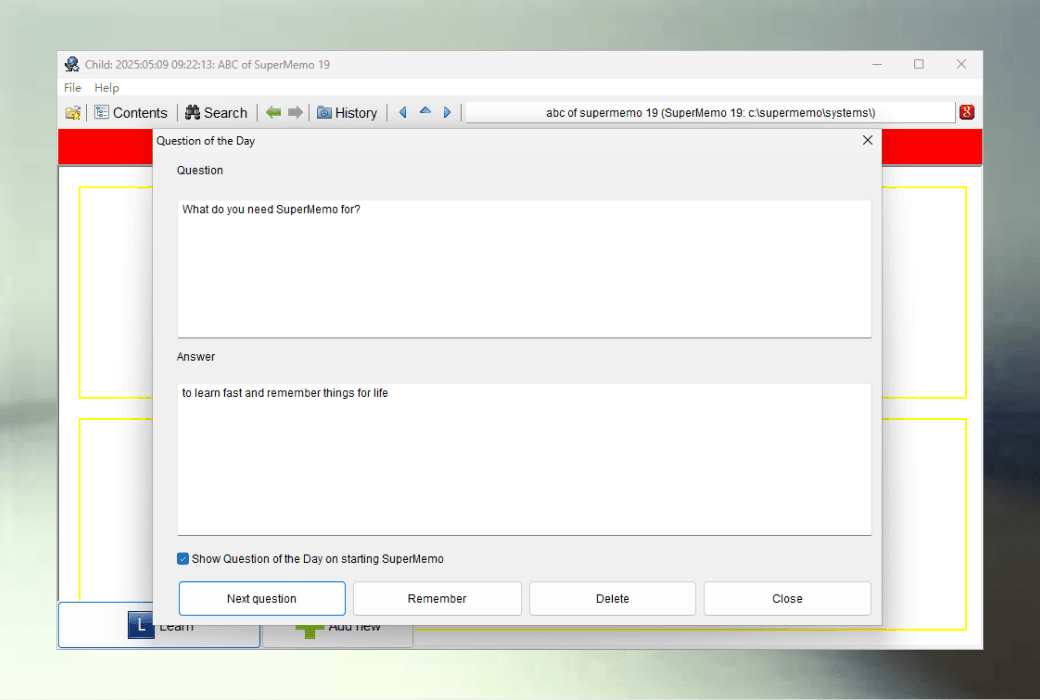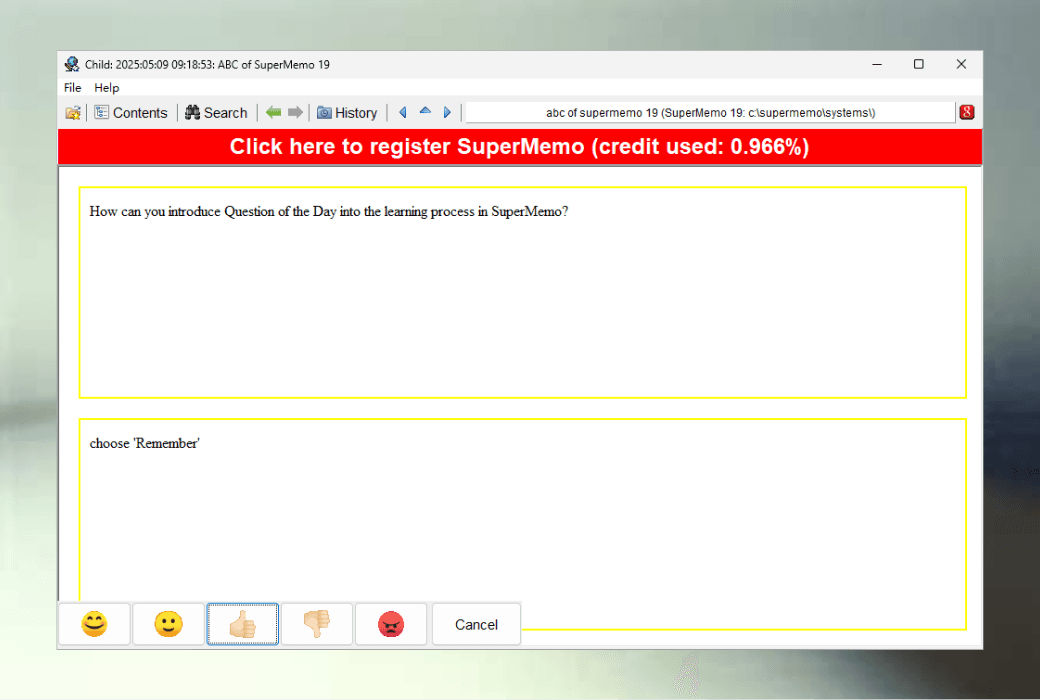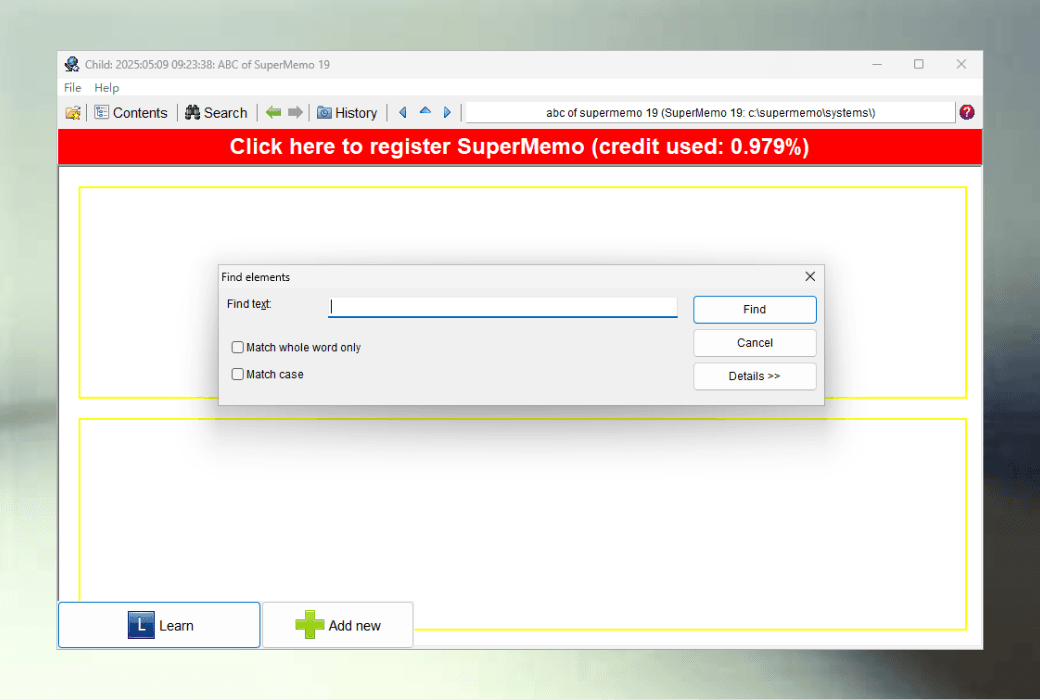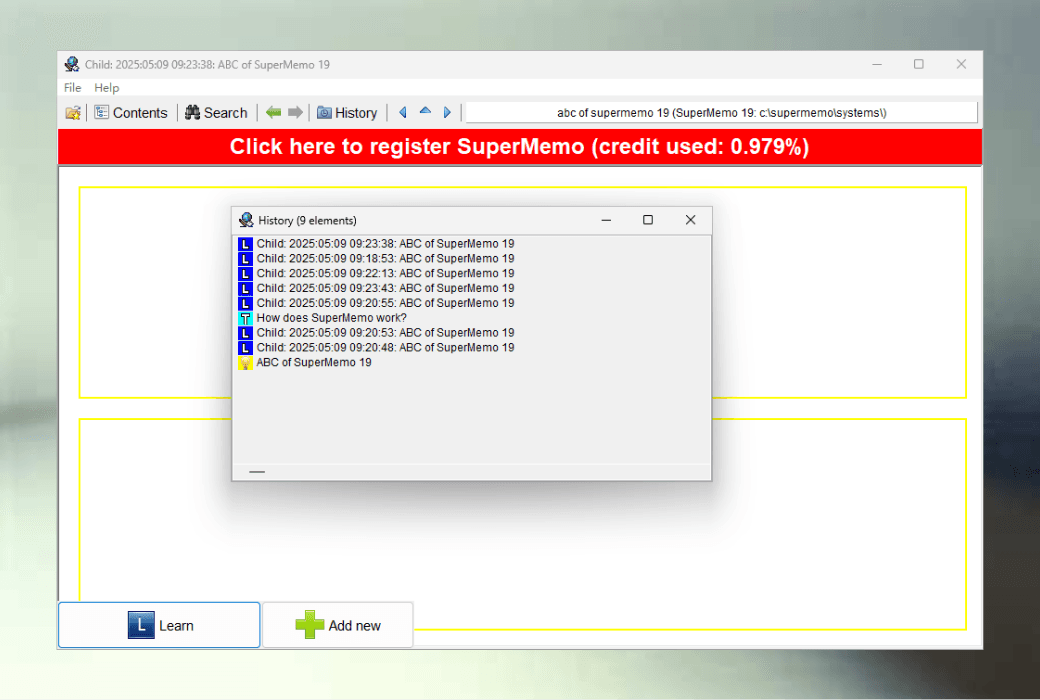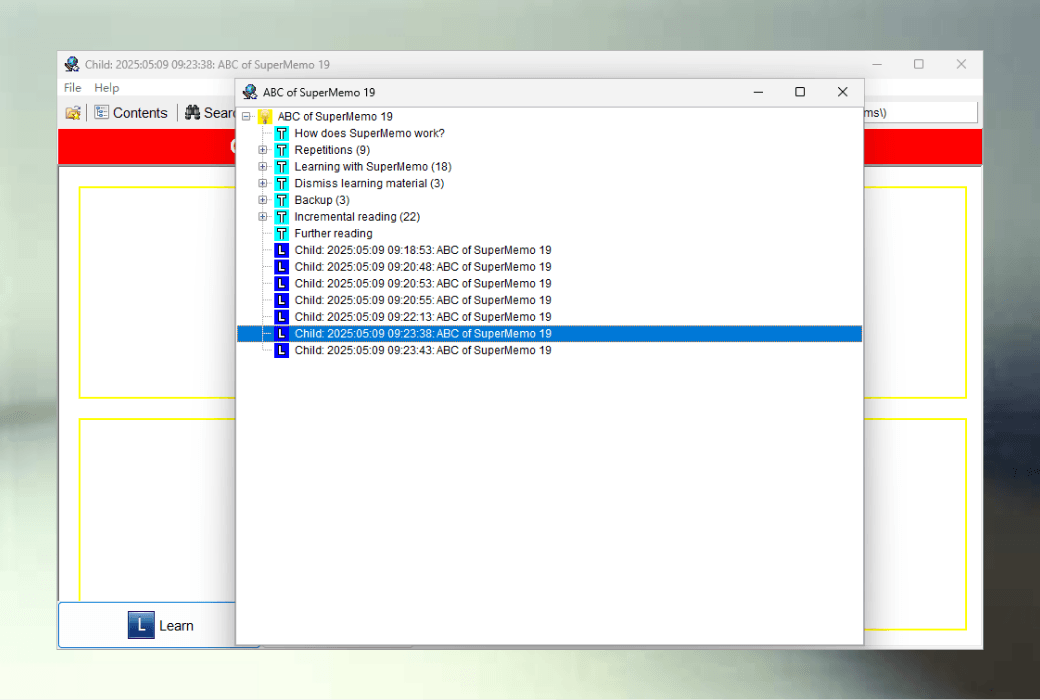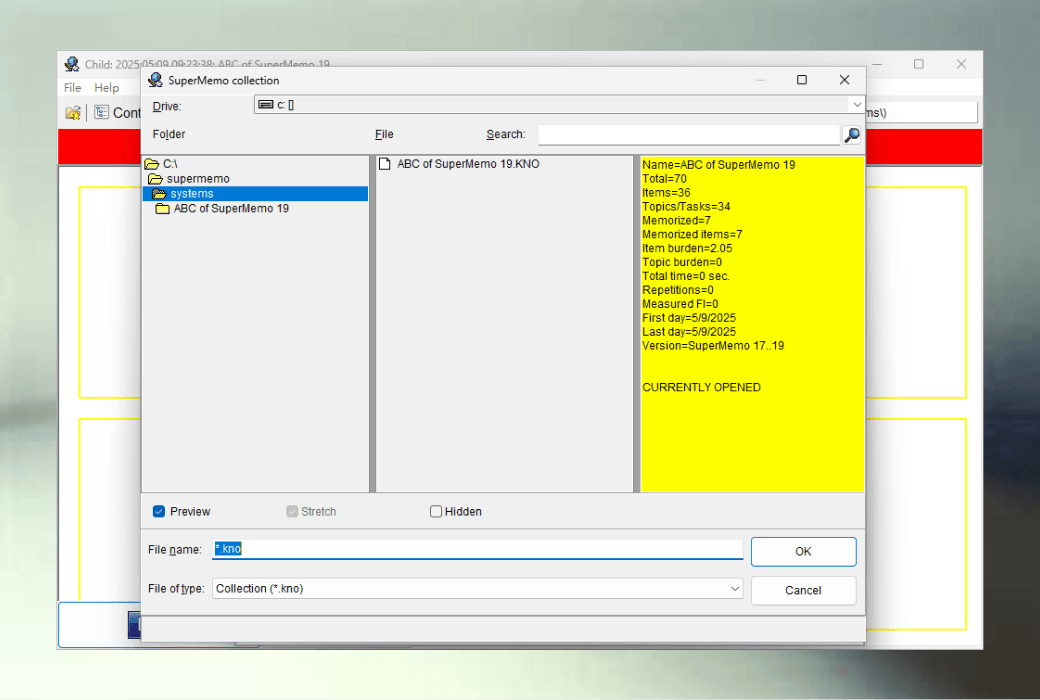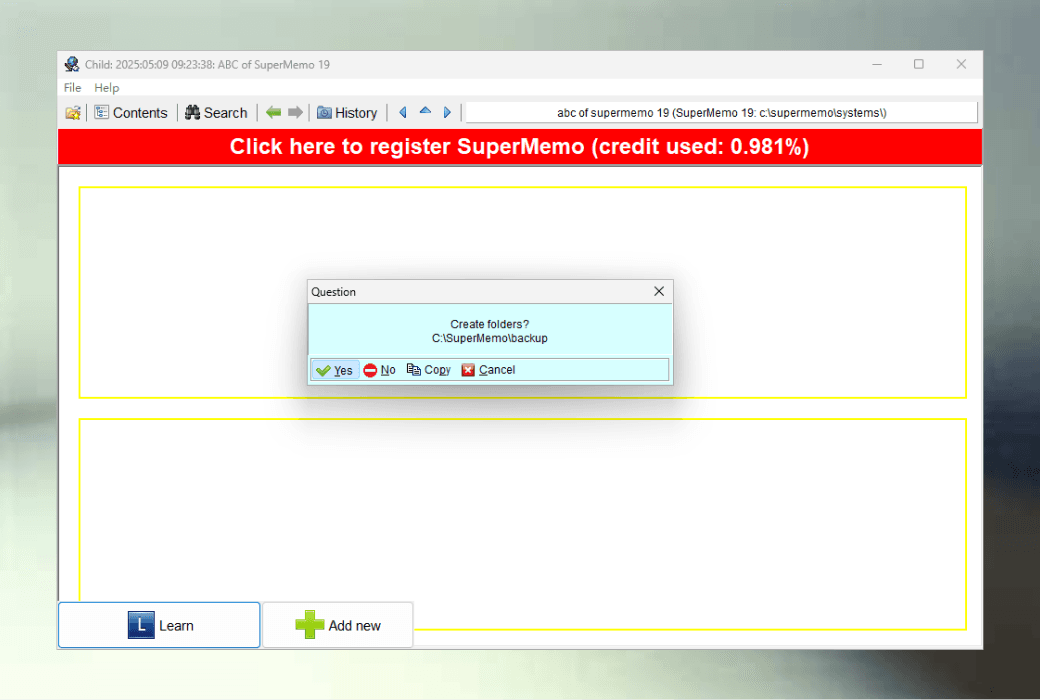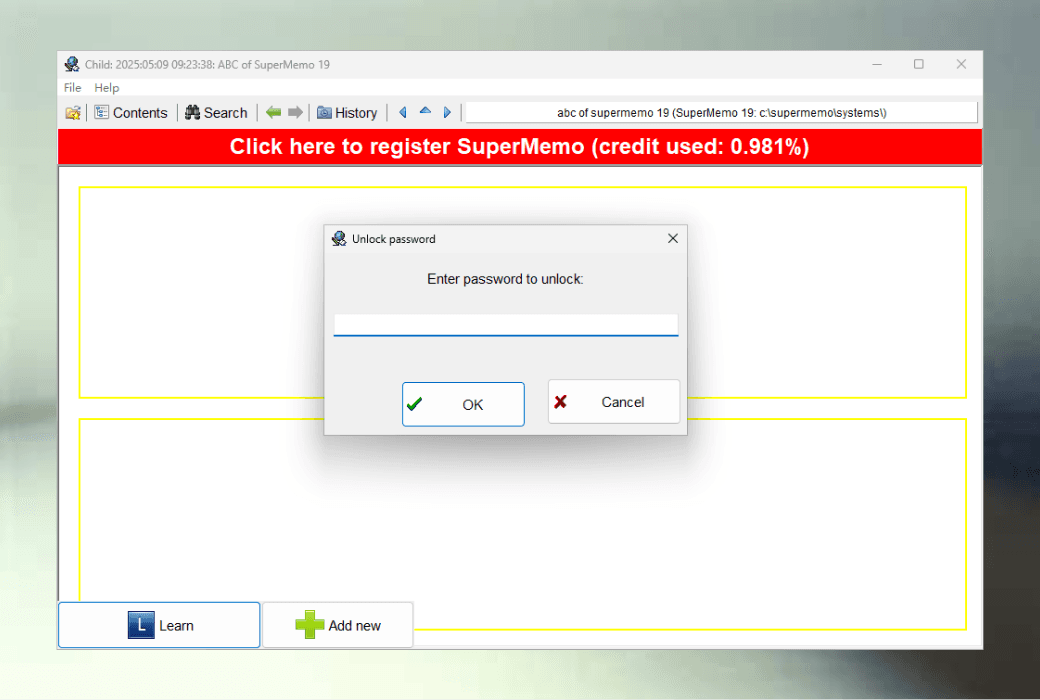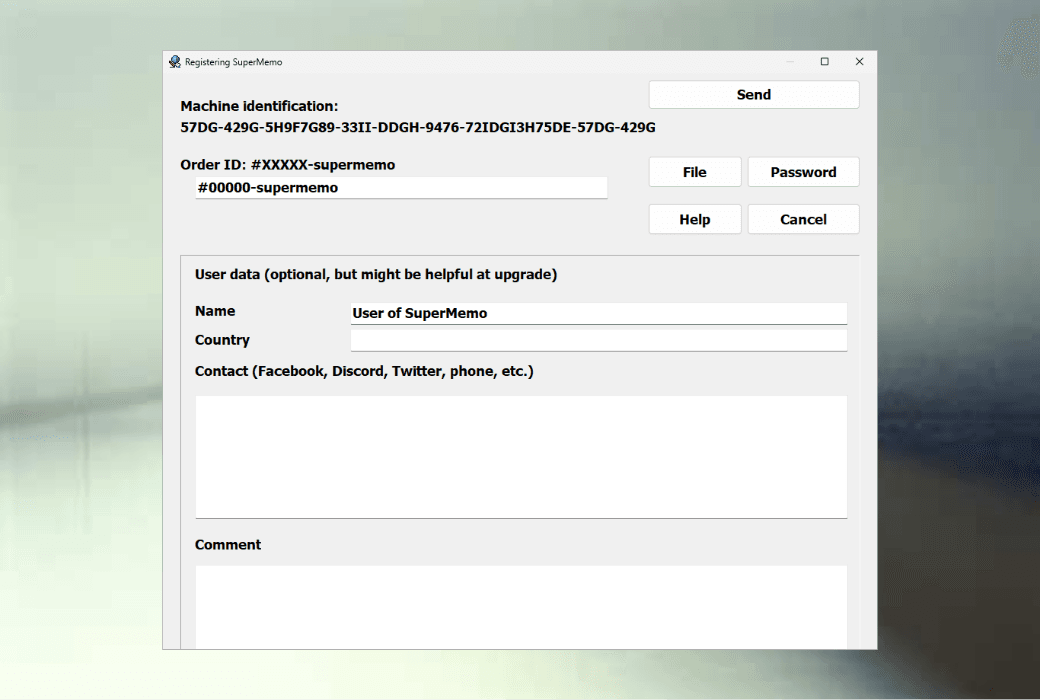You haven't signed in yet, you can have a better experience after signing in
 SuperMemo 19 Super Memory Master Learning Tool Software
SuperMemo 19 Super Memory Master Learning Tool Software

Activity Rules
1、Activity time:{{ info.groupon.start_at }} ~ {{ info.groupon.end_at }}。
1、Activity time:cease when sold out。
2、Validity period of the Group Buying:{{ info.groupon.expire_days * 24 }} hours。
3、Number of Group Buying:{{ info.groupon.need_count }}x。
Please Pay Attention
1、Teamwork process: Join/initiate a Group Buying and make a successful payment - Within the validity period, the number of team members meets the activity requirements - Group Buying succeeded!
2、If the number of participants cannot be met within the valid period, the group will fail, and the paid amount will be refunded in the original way.
3、The number of people required and the time of the event may vary among different products. Please pay attention to the rules of the event.
SuperMemo is a tool for fast learning and lasting memory. SuperMemo can help with rapid learning and maintain long-term memory. Although SuperMemo operates similarly to flashcard programs, its functionality far exceeds other programs. SuperMemo uses the principle of interval repetition to present knowledge at the appropriate time when the brain is preparing to reinforce memory. Using SuperMemo every day can easily help you remember 95% of what you have learned.
3 key facts about SuperMemo
- Learn faster, remember for years: SuperMemo is a powerful learning method that can help you retain knowledge for life - not just for exams.
- Available everywhere: Use SuperMemo on Windows, Android, iOS, or directly in your web browser.
- Driven by science: SuperMemo is built on the foundation of long-term memory science and decades of research.
The working principle of SuperMemo
- Capture important content: Use SuperMemo to transform facts, ideas, or anything you want to remember into learning material.
- Test your memory: SuperMemo regularly checks your recall ability and establishes a detailed model of your memory performance.
- Review at the best time: Based on your memory, SuperMemo will schedule a review before forgetting.
- Save time and energy: With minimal review and no wasted energy, you will be amazed at how much you can learn and remember.
SuperMemo: Not just repetition
In addition to the intelligent review plan, SuperMemo 19 for Windows also provides you with a complete toolkit to enhance your brain:
- Using incremental learning to read and remember a large amount of information
- Learning through images, audio, and video
- Track and analyze your sleep
- Optimize learning based on your sleep pattern
- Using concept maps to enhance problem-solving skills
- Utilize neural creativity to enhance your creativity
- Plan your workday to improve efficiency and reduce stress (see: Planning Efficient Workdays)

Official website:https://supermemopedia.com/wiki/Main_Page
Download Center:https://supermemo.apsgo.cn
Backup Download:N/A
Delivery time:Manually processing orders
Operating Platform:Windows
Interface language:Only supports English interface display.
Update Description:Support minor version updates, such as 19. x.
Trial before purchase:Free trial.
How to receive goods:After purchase, the activation information will be sent to the email address at the time of placing the order, and the corresponding product activation code can be viewed in the personal center, My Orders.
Number of devices:Two devices.
Replace computer:We need to apply for a new activation code again on the new computer.
Activation guidance:To be added.
Special note:To be added.
reference material:https://supermemopedia.com/wiki/Trouble_activating_on_a_new_computer

Any question
{{ app.qa.openQa.Q.title }}
Why haven't closed elements been removed from the priority queue?
In the design of priority queues, all elements - whether memorized, processed, or pending - are retained in the queue. This design is based on considerations of the learning stage, rather than simply determining whether an element is in the queue based on its state (such as whether it has been processed).
The reasons are as follows:
1. The dynamism of the learning stage
The priority queue is not just a simple sorting tool, it also reflects the dynamic changes in the learning process. Even if an element is marked as' processed ', its position in the queue will still dynamically adjust based on its priority. Therefore, the order in the queue is not fixed and unchanging.
2. Integrity of the queue
Technically speaking, the priority queue contains all elements, regardless of their current learning stage. This design is to ensure that users can have a comprehensive understanding of the learning progress, rather than simply excluding certain elements.
3. Avoid misunderstandings of "clutter"
It is not common for "processed" elements to cause queue clutter. The design of the queue ensures that even if there are a large number of "processed" elements, they will not all gather at the bottom of the queue. Therefore, users usually do not feel the impact of this "clutter".
Although it may seem unreasonable to keep "processed" elements in the priority queue intuitively, this design is aimed at better managing learning progress and priority. If you still have questions about this design, you can refer to the following videos, which provide more detailed explanations and demonstrations:
I hope this information can help you better understand the design logic of priority queues.







